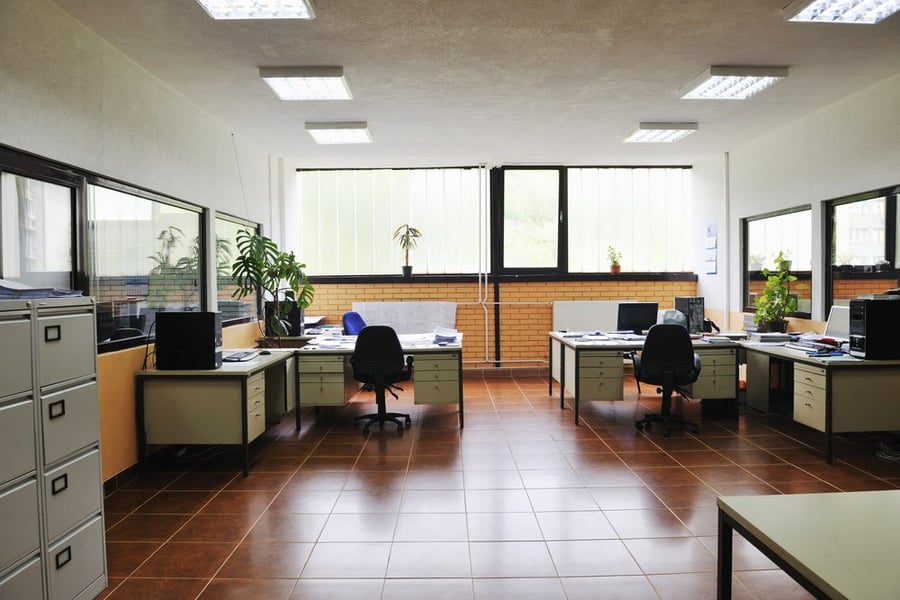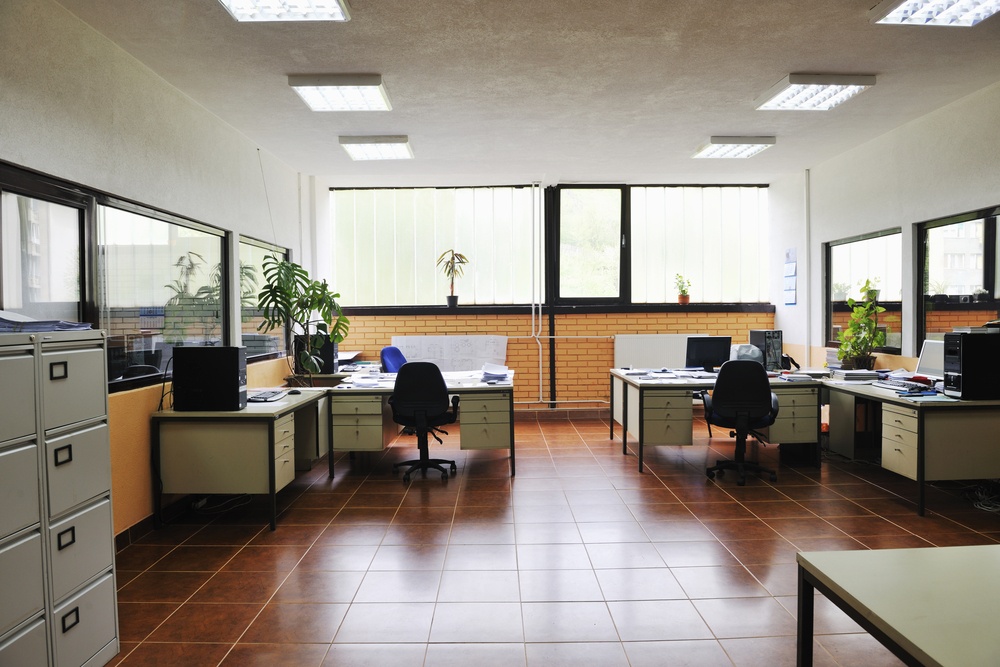
It may sound like something lifted straight from a horror movie, but the places where we live and work could be having an adverse effect on our general health and wellbeing. Not quite to the point of endangering our lives but nevertheless, the four walls in which we find ourselves right now (as we read this) are not all that they seem.
Sick Building Syndrome is a very real thing, and there’s an outside chance that it might be playing havoc with your body and its finely-tuned immune system, while you’re doing what you do indoors. While we’re all very aware of just how pollutants we’re exposed to when we’re out and about can, potentially lead to all sorts of health issues, most of us assume that once we’re ensconced in the safety of our familiar domestic cocoons (or work environs by the same token), then such dangers are pretty much left on the doorstep.
But you’d be very wrong for thinking this.
Let’s address the facts, shall we…..
Take a typical work situation for example. When you acknowledge that a number of people cohabit under the same roof and four walls – day in, day out – creating, sharing (and being exposed to) dirt, dust and other debris which accumulates quite quickly, and suddenly the concept seems less far-fetched. Poor office air quality has been proven to be a significant contributing cause of Sick Building Syndrome, which can easily affect employees who unwittingly live and breathe it.
The most prevalent symptoms associated with SBS include complaints of headaches, respiratory issues, coughing and or fevers even, as many of us go about our daily grind without necessarily knowing about the compromised air quality we’re inhaling during the 9 – 5. Which is a big worry. Especially since we tend to spend up to 90% of our time in an enclosed environment of one description or another, during work time.
The primary concern, arguably, is that indoor air quality is not an easy concept to define; or indeed physically pinpoint. Unlike a leaky outlet you could point at, compromised indoor air quality is a constantly evolving interaction which amasses various complex factors which combine. Habitually including types, levels and importance of pollutants in indoor environments, highlighted factors include the source of pollutants (or odours); the design, maintenance and operation of building ventilation systems; moisture and humidity; and occupant perceptions and susceptibilities.
However the stats can’t be ignored when it comes to the risk we find ourselves at, either. Recent research undertaken in America noted that it’s not unheard of for indoor environments to sometimes play host to levels of pollutants which are recognised as being higher than those monitored outdoors. So much for shutting the door and feeling safe.
Of course, only a relatively small numbers of our offices would rate as alarming in terms of the severity of indoor air quality threats, but that’s not to say we all couldn’t act to improve on the conditions we face – and largely accept – during the working week. And let’s not forget that even the most well-run buildings can still be prone to episodes of polluted air quality, albeit unseen by the naked eye.
So, what are we suggesting by way of a means to combat the menace of Sick Building Syndrome?
Below we look at a few of the key measures employers can all adopt to minimise the risk posed by poor air quality, none of which you’d refer to as being rocket science; yet all positive steps any of us can take to make our immediate environment a healthier, happier (and sickness-free) place to go about our business. The chances are, you may already be practicing them, in which case, job done. But if you’re not, then now is a good time to instigate the changes needed to ensure employee wellbeing.
Walking the walk starts with controlling the identifiable sources of pollutants; either by removing them from buildings or alternatively seeking ways in which to isolate the threat from employees in situ. Normally by way of physical barriers, air pressure relationships or by controlling the timing of their use. The second angle of attack as such is where emphasis is placed on diluting the now-known pollutants and subsequently auctioning the timely removal of the noxious materials, via the building’s existing ventilation systems. And lastly, dedicated filtration systems should then be acquired so as to ultimately cleanse the air of any future pollutants.
That’s the theory, anyway. Moving onto the everyday practices….
…And we’re talking about keenly applying the following procedures and protocols, generally recommended by industry experts. And by industry, we mean air hygiene, and the related sector.
- Ensure that air vents remain open at all times and unblocked. Should any office furniture, boxes or other items provide an obstacle, then it’s imperative that said obstacle is removed to allow the clean air to circulate freely within the area
- Air filters are your first line of defence. Keep on top of air filter maintenance in the work surround and replace them frequently (every 6 – 12 months, ideally). Failure to do this means that clogged up air filters will compromise natural air flow to the point where it becomes non-existent. Thereafter dust and debris particles will congeal behind the filters and go on to take up residence inside the air ducts
- Humidity is your friend. What’s defined as a healthy level of humidity (roughly between 30% and 50%) is required to combat the unwanted presence of dust mites, mould and a number of different – yet equally health-implicating – allergens in the work place. The routine use of dehumidifiers and air conditioners to control the humidity level, will pay dividends regarding employee wellbeing.
- Channel your inner Prince Charles. Yes, introduce plants to your office space, and encourage them to grow by any means possible. Aside from proffering a calming aesthetic and ambience to a place of work, plants readily absorb toxins and generate a lot more oxygen. Both of which will make employees work life a lot better
- Fresh air is the best air. Fling open a window and invite in the outside as and when possible/when weather permits. Fresh air entering and circulating an office space works wonders, while conversely open windows provide instant escape routes for stale air
- Don’t ignore spills. Did you know that excess moisture (or residual dampness) actively encourages proliferation of mildew and mould? Which in itself can put employee health at risk. Bottom line is that it’s cheaper to proactively prevent mould damage, rather than react to it with expensive remediate work.
- A clean work space is a healthy work space. Keeping on top of regular vacuuming, dusting and general sanitising will afford employees a fighting chance of staying fit and healthy; while not allowing clutter and discarded rubbish to build up, is equally important. By doing this, pollutants have a drastically reduced opportunity to mix with the air you breathe and lead to sickness
- Air duct management shouldn’t be overlooked. Make sure that you inspect and clean air ducts in buildings on a regular basis. Should any signs of impacted air quality or circulatory issues be observed, get in touch with experts in air hygiene services to do the necessary. Courtesy of first assessing the secondly rectifying the underlying issues prior to employee’s health being put on the line
- Arrange regular air quality tests. By bringing in the right people for the job – who arrive with the right tools, knowledge and experience – employers will be reassured that they’re doing all they can to eliminate poor air quality from the place of work. These companies are past masters at measuring air quality in office surrounds, taking into account everything from air flow, humidity levels, ventilation and odours, through to leaks, standing water, water damage and mould growth. Post-inspection you’ll be aware of what’s what and moreover, what needs to be done next (if anything).







